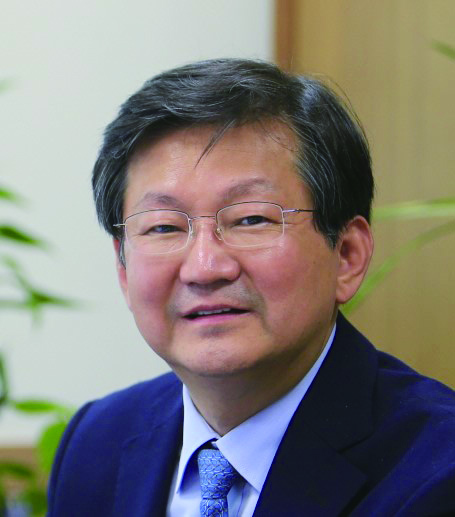
Chong Soo Lee (GIFT)
Professor Chong Soo Lee in the Graduate School of Energy and Materials Technology (GIFT) recently published two ISO (International Organization for Standardization) standards for evaluating the hydrogen embrittlement resistance of high strength steels, which are essential for the wide application of hydrogen energy. Such achievement was possible through the collaboration with the Korea Testing Laboratory (KTL). In commemoration of the enactment of these standards, The Postech Times requested a contribution article about Prof. Lee’s research and teaching life.
Brief information about Prof. Lee and his laboratory
Let me briefly introduce myself. I received my bachelor’s and master’s degrees from Seoul National University in 1979 and 1981, respectively, and a Ph.D. degree from the Polytechnic Institute of New York University in 1985. After working at the University of Minnesota as a postdoctoral fellow, I became an assistant professor in the Department of Materials and Metals Engineering (now the Department of Material Science and Engineering) in March 1987, when POSTECH just opened its gates. For the next 25 years, I focused on research to improve the mechanical properties of steel, titanium alloys, and magnesium alloys. In 2012, I was appointed as head of GIFT and retired in August 2020. Currently, I am working as a specially appointed professor with 3 Ph.D. course students at GIFT.
My laboratory, named Materials Reliability Lab, aims to improve various mechanical properties such as fatigue and hydrogen embrittlement by controlling the microstructure of materials, especially in areas that cause fatal damage.
Prof. Lee’s research topics
From a material engineer’s point of view, the properties of a material greatly depend on its microstructural parameters such as grain size, dislocation density, the presence of precipitates or second phases, and so on. My research topic is to find microstructures that show maximum resistance to failure under monotonic and/or cyclic load even in a hydrogen atmosphere. For example, high-strength steel wires are widely used for automobile parts (engine valve springs, tire cords, etc.). As the strength of steel increases, hydrogen embrittlement susceptibility increases, and therefore, it is necessary to find ways to suppress failure. So far, we have solved many industrial problems through the proper control of microstructures, which are rationalized by fundamental theories.
Since the opening of the school, thanks to POSCO, most professors of the MSE department have carried out many industrial and academic projects with POSCO. My research counterpart of POSCO was mainly “the Wire group”. From 1987 to 2007, research efforts were made to enhance fatigue resistance of various metallic alloys, and to clarify underlying mechanisms. Also, intelligent forming technology of Ti alloys was developed by applying artificial neural networks (ANNs) and processing maps. From 2008 to the present, many research works were made with the collaboration of POSCO wire group to develop ultrahigh strength steels revealing excellent hydrogen embrittlement resistance. Nowadays, the importance of hydrogen is emerging as environmentally friendly energy, and a hydrogen society is expected to come in the near future. Therefore, it is important to assure the safety and durability of materials for hydrogen production, transportation, and storage. Although vast amounts of work have already been made at home and abroad, many arguments on the roles of hydrogen still exist, and a unified theory needs to be established.
Collaboration with KTL for publishing two ISO Standards
KTL is an organization under the Ministry of Trade, Industry and Energy established in 2006 to enhance the technology level and competitiveness of industries through quality certification of product performance and safety, development, and support of industrial field measurement standards. In 2008, collaboration between my lab and KTL was started to submit an International Standards regarding the evaluation of hydrogen embrittlement of steels to ISO. Thereafter, we have established 2 ISO standards. In fact, it takes a long time to get feedback and corrections from foreign researchers. While conducting joint research with KTL, I received a lot of help from KTL for the enactment process, specifications, and documentation of ISO standards. I would like to take this opportunity to thank the KTL researchers.
Advice for Postechians
From my experience in POSTECH, I know very well the excellence of our Postechians. If I have to add some more words, I would like to mention three points. First, be proud of yourself as a Postechian. Our university is recognized as one of the best universities in the world. It has a great educational environment, such as world-renowned professors, excellent students, and stable financial support. Second, try and practice to cultivate creativity. Our society has been changed by many pioneers who are filled with innovative ideas. Try to think about “why” and “how” in solving problems. Third, I hope Postechians will become global leaders in science and engineering. God bless POSTECH and Postechians!


